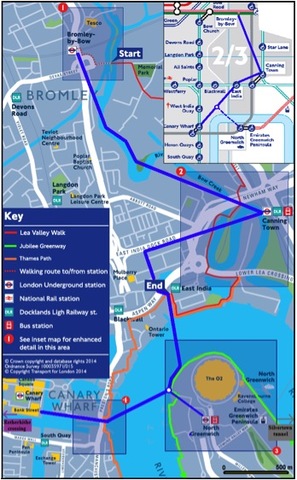EU APPLICATION
The GTS Foundation is trying hard to get funded by EU Horizon 2020 through the FET OPEN calls, Future and Emerging Technologies, Open to any novel and plausible technology off the roadmap. Four proposals have been submitted: September 2015, acronym GTS, rejected; May 2016, acronym GTSX, rejected; and January 2017, two parallel proposals, due to the complex interdisciplinarity, acronyms MAG and NET, rejected in June 2017. Now our latest proposal GTSTEC is under evaluation, the result of which will be presented in late February 2018.
Our focus on FET OPEN depends on the fact that no other research funding programme is so wide open to "disruptive but plausible concepts". The "DNA" of GTS is precisely that.
The proposal named GTSTEC (click to open proposal) contains advanced electric, magnetic and operational experiments, laboratory test of a demonstrator, and a full-scale mock-up cabin. The research will be performed by the Department of Energy Technology in Aalborg University, Denmark, together with the Faculty of Engineering at Mondragon University in the Basque province, Spain. Both institutes develop excellent research in groundbreaking electromagnetic applications. Bjerking Design Company in Uppsala/Stockholm and The Centre for ECO2Vehicle Design at Royal Institute of Technology, KTH, Stockholm, both Sweden, will design and construct the full scale guideways, pillars, pylons and cabins; Both institutes have advanced know-how for this kind of research and applications together with Yovinn, Gothenburg and AyCrete, Stockholm as subcontractors. The main coordinator is the GTS Foundation (this webpage) heading also the Interdisciplinary Working Board (IWB) and the Communication group (COM) for disseminating facts, findings, perception studies and exhibitions. The IWB consists of lead participants in GTSNET but also presumable lead participants in a coming stage exploring environmental facts, logistics, a pilot test plant (in Uppsala) and concluding societal economy.
Uppsala - Ultuna Link - site case

The 2050+ five nuclear structure. Urban centers interconnected with fast "public" transportation links. The Ultuna Link marked in red.
At Arlanda international airport and adjacent Uppsala, podcars and GTS have been discussed and demonstrated repeatedly over the last decades. In a current general plan proposal for Uppsala there is a 4 km desirable peripheral link between two southern urban sprawls towards the airport. However, the link would cross a national park and the Fyris river, where both a car-road and a light-rail-line would harm the environment. Thus the city and the GTS Consortium have an understanding that the GTS project should study a GTS line in this location and analyse the possible advantages and further connections by different modes, both to the city centre and the airport.
Uppsala, with more than 200.000 inhabitants, is the northern node in the Uppsala - Stockholm labour market and business region. Uppsala has two universities and thriving trade and industry, e.g. prominent research and business in areas such as life sciences and energy physics. The population, commuting and business trips in the Uppsala-Arlanda-Stockholm corridor are growing rapidly. So is the city of Uppsala.
The projected population growth for Uppsala is an increase up to 135 000 new inhabitants and 70 000 new jobs by 2050. This means that by 2050 the city must serve a population of 340 000 inhabitants.
In 2016 the city council of Uppsala adopted a new comprehensive plan for city development until the 2050:ies. The plan provides a framework that can meet the projected growth in a sustainable manner.
Four complementary urban centres are to be interconnected with each other and the inner city with fast and frequent public transportation links with high capacity (see figure).
London Docklands - Canary Wharf - a possible future case

London Docklands, Canary Wharf, Communications between both sides of the river Thames would be solved by ease with GTS
A study in London can be developed to explore advantages of implementing a GTS line, but also to learn from a comparison with the Uppsala case study. The London case study has been identified in the recently regenerated area of Canary Wharf and the Isle of Dogs, which presents the confluence of several national walks, such as Lea Valley Walk, Thames Path and Jubilee Greenway. However, limited Thames crossing connections with the Peninsula (square 3 in Figure) makes interchange and the potential of the regenerated area underexploited (see Figure). Thus, the GTS case study application in London will cover an area of approximately 7 km2 where more than 100,000 people live and there are 52,000 jobs in the area, with an estimated population growth over 30 percent by 2041 according to recent projections.
Although existing road network and public transport systems (such as bus and metro/DLR) exist, the connections between the two sides of the Thames (squares 2, 3 and 4 in Figure), especially for non-motorised mode, are poor, and connectivity between DLR and traditional metro lines is below the average in London. This can be observed looking into the Public Transport Accessibility (PTA) score, which is a measure of the accessibility of a point to the public transport network, taking into account walk access time and service availability. The boroughs covered by the case study present an average value of 3.6 (with certain census wards below 3.0) compared to a London average of 4.0 and surrounding areas with PTA score above 5.0. Recently this gap of accessibility has been highlighted by a report identifying the need for new river crossings in East London. After a consultation period with almost 7,500 responses received, the analysis undertaken has shown that over 90 percent of respondents expressed support for new crossings and the majority of feedback supported the introduction of new fixed link crossings. The proposed GTS line then will complement the planned pedestrian and cycle crossing linking Rotherhithe to Canary Wharf and the greener Silvertown tunnel (see bottom left and right indicators in the figure).
This site presents an interesting configuration since it has a similar catchment area and expected growth rate of the Uppsala site in terms of population/jobs, but since it is located within a bigger city like London, different dynamics and needs will be identified and modelled, including the higher level of multimodality.
